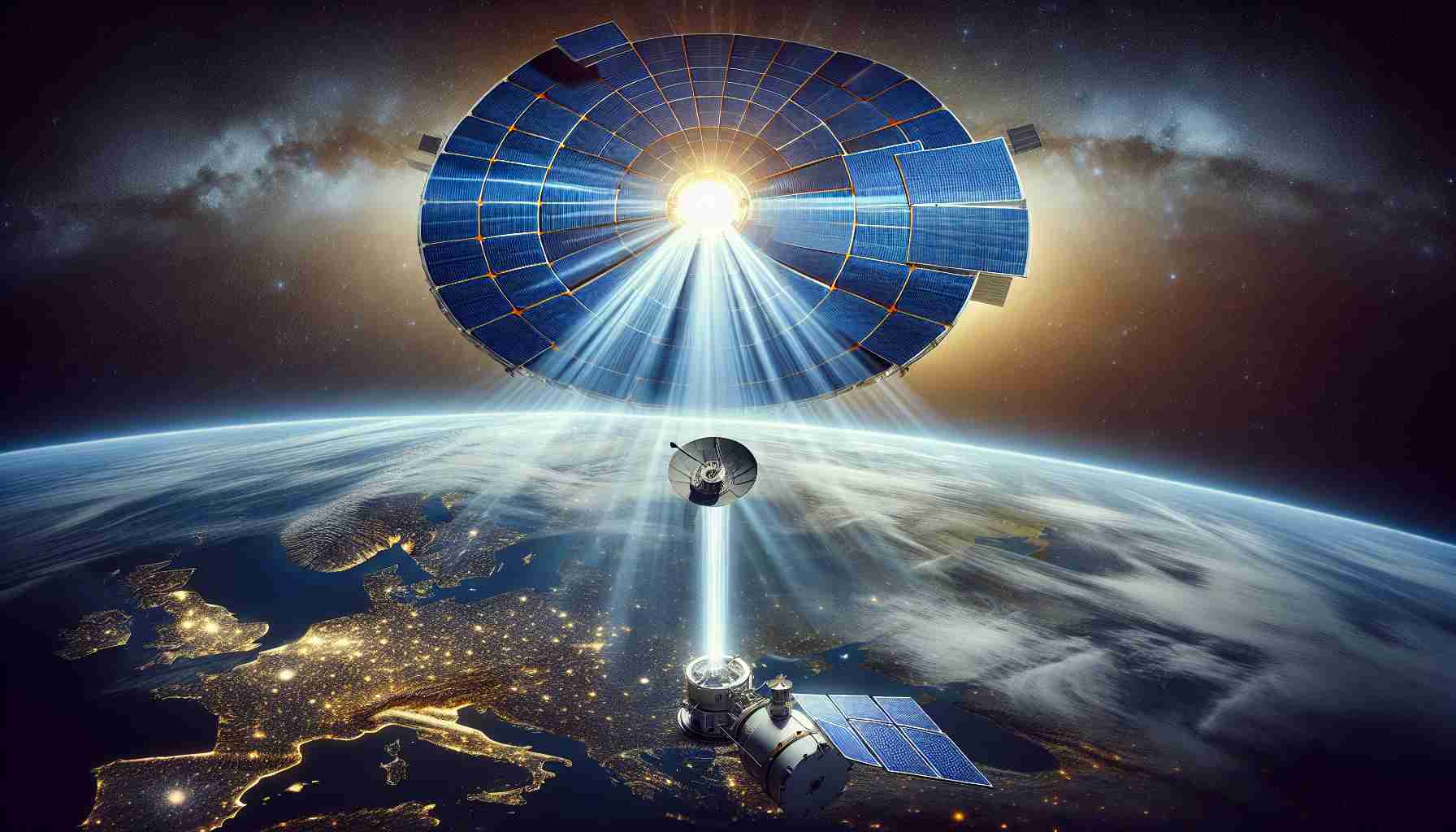
Space Solar and Partners Set to Transform Energy Production
In a groundbreaking agreement announced in late October, three innovative companies have united to pioneer a new frontier in renewable energy: solar power sourced from space. This ambitious collaboration includes Space Solar, an emerging startup from the U.K., alongside Transition Labs from Iceland and Reykjavík Energy.
The partners aim to develop a revolutionary solar energy system that generates power in space and transmits it back to Earth using high-frequency radio waves. This innovative technology would allow ground stations to convert this energy into usable electricity.
The initial phase of this project, set to begin in 2030, will see Reykjavík Energy purchasing the clean energy produced by this system. Space Solar plans to deploy a massive solar array measuring approximately 400 meters in length, which dwarfs the solar panels currently utilized on the International Space Station.
The proposed solar array is expected to generate an impressive 30 megawatts of power, sufficient to supply electricity to around 5,190 homes. A crucial advantage of this method is its independence from weather conditions, which often affect ground-based solar energy production.
Moreover, the co-CEO of Space Solar emphasized that this space-based approach to solar power will significantly reduce electricity costs, making renewable energy more accessible. If successful, this project could herald a new era of clean energy production, accelerating the shift away from fossil fuels and contributing to efforts against climate change.
Revolutionizing Renewable Energy: Space-Based Solar Power Set to Launch
The Future of Solar Power: A Space Exploration
In an era where renewable energy is paramount, the recent partnership between Space Solar, Transition Labs, and Reykjavík Energy is a game-changer. The ambitious initiative to harness solar energy from space not only aims to innovate energy production but also redefines our approach to sustainability.
Key Features of Space-Based Solar Power
1. Technological Innovation: The core technology revolves around a solar array capable of generating energy in space. The 400-meter-long solar panel system will use high-frequency radio waves to transmit energy back to Earth, offering a unique solution that bypasses terrestrial limitations.
2. Energy Output: Expected to generate around 30 megawatts of power, this system could potentially supply electricity to approximately 5,190 homes, showcasing the immense scalability of space-based solar energy.
3. Weather Independence: One of the most significant advantages is the elimination of weather-related disruptions. Unlike ground-based solar technologies that are hindered by cloud cover and nightfall, this innovative system will provide a continuous energy output, ensuring a stable and reliable power supply.
4. Cost Reduction: The project aims to dramatically decrease electricity costs. By tapping into space, where solar energy is abundant and uninterrupted, prices could become much lower compared to traditional fossil fuel sources.
Pros and Cons
Pros:
– Sustainability: A clear move towards reducing reliance on fossil fuels.
– Reliability: Consistent energy production irrespective of terrestrial weather conditions.
– Scalability: Potential to be expanded to meet growing energy demands.
Cons:
– Initial Costs: Developing and deploying technology in space will require substantial initial investment.
– Regulatory and Safety Challenges: Overcoming the regulations concerning space operations and ensuring safety will be crucial.
Use Cases and Applications
The space-based solar power system holds significant potential for various applications:
– Urban Energy Supply: Major cities can benefit from a consistent energy supply, reducing gaps during peak times.
– Remote Area Support: Providing electricity to remote or underserviced areas that lack traditional power infrastructure.
– Space Missions: Powering satellites and other space explorations where solar energy is needed.
Looking Ahead: Trends and Predictions
As the world shifts towards cleaner energy, this partnership’s announcement could set a precedent for the future of energy production. With other countries and organizations likely to follow suit, the trend toward space-based renewable energy may accelerate much sooner than anticipated.
Experts predict that by 2040, we could see the first operational systems generating power from space, with a full understanding of the long-term benefits and logistics that accompany such transformational technology.
Sustainability and Security Considerations
The move towards space solar power directly influences sustainability efforts by providing a clean energy alternative that can significantly reduce greenhouse gas emissions. Moreover, the energy providing method will hinge on secure transmission technology to prevent energy losses and ensure consistent delivery, enhancing overall energy security.
Conclusion
The collaboration between Space Solar, Transition Labs, and Reykjavík Energy signifies an exciting leap forward in renewable energy technology. As these companies work towards their ambitious goals with space-based solar power, they not only inspire innovation in the energy sector but also contribute significantly to the global push for sustainability and climate action.
For more information on renewable energy trends, visit Energy Star.



